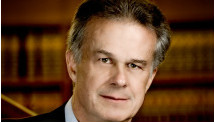NEW YORK (Reuters) - The S&P 500 eased slightly on Monday after an eight-day run of gains, while the Nasdaq edged higher as Apple shares rebounded.
The index remained above 1,500, however, after closing above that level on Friday for the first time in more than five years. The S&P 500's eight sessions of gains was its longest winning streak in eight years.
Caterpillar
"I think this multi-year high is really something that's in play both for shorter-term traders and with folks with money on the sidelines," said Bucky Hellwig, senior vice president at BB&T Wealth Management in Birmingham, Alabama.
Bargain hunters lifted Apple after the tech giant's stock dropped 14.4 percent in the previous two sessions. With Apple's stock up 2.3 percent at $449.83, the iPad and iPhone maker regained the title as the largest U.S. company by market capitalization as Exxon Mobil
On the down side, Boeing
The Dow Jones industrial average <.dji> was down 14.05 points, or 0.10 percent, at 13,881.93. The Standard & Poor's 500 Index <.spx> was down 2.78 points, or 0.18 percent, at 1,500.18. The Nasdaq Composite Index <.ixic> was up 4.59 points, or 0.15 percent, at 3,154.30.
Investors poured $55 billion in new cash into stock mutual funds and exchange-traded funds in January, the biggest monthly inflow on record, research provider TrimTabs Investment Research said.
"What we have seen this year is, it appears the individual investor is allocating some 401(k) money to equities. Hopefully that's a decision that will be with us for a while," Hellwig said.
Data on Monday pointed to growing economic momentum as companies sensed improved consumer demand.
U.S. durable goods orders jumped 4.6 percent in December, a pace that far outstripped expectations for a rise of 1.8 percent. Pending home sales, however, unexpectedly dropped 4.3 percent. Analysts were looking for an increase of 0.3 percent.
Corporate earnings so far have mostly been stronger than expected. Thomson Reuters data showed that of the 150 companies in the S&P 500 that have reported earnings so far, 67.3 percent have beaten analysts' expectations, which is a higher proportion than over the past four quarters and above the average since 1994.
After the bell, shares of Yahoo
During the regular session, Hess Corp
Stocks have also gained support from a recent agreement in Washington to extend the government's borrowing power. On Monday, Fitch Ratings said that agreement removed the near-term risk to the country's 'AAA' rating.
Volume was roughly 6.1 billion shares traded on the New York Stock Exchange, the Nasdaq and the NYSE MKT, compared with the 2012 average daily closing volume of about 6.45 billion.
Decliners outpaced advancers on the NYSE by nearly 4 to 3, while advancers beat decliners on the Nasdaq by about 7 to 5.
(Additional reporting by Rodrigo Campos; Editing by Jan Paschal and Nick Zieminski)


